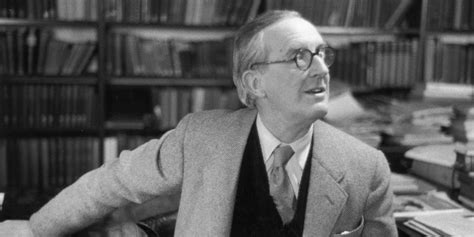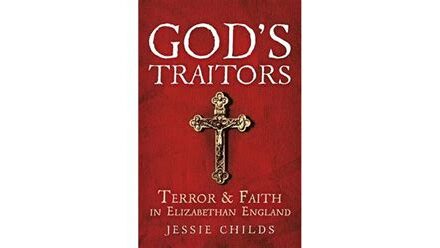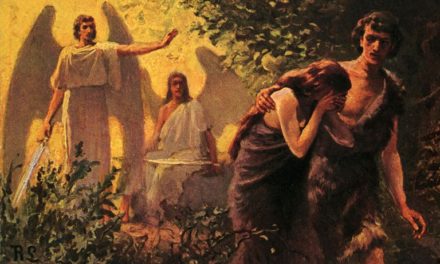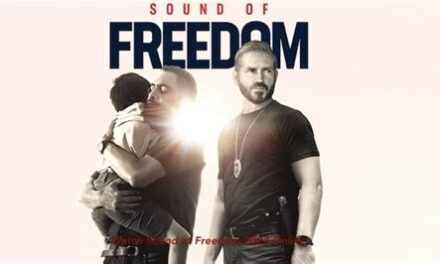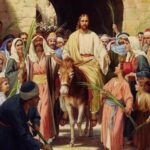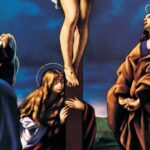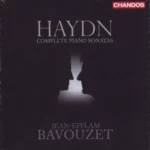J. R. R. Tolkien’s works, especially The Hobbit and The Lord of the Rings, have a status so exalted in the shrinking canon of books that are actually read nowadays that it is all but unthinkable that any critic, scholar, or reader would regard them with an indifferent or condemnatory eye.
This rather privileged state of affairs—few can claim such unassailable popularity—was not always the norm. When it first saw publication in the fifties, critical reaction to Tolkien’s magnum opus ranged from the now familiar adulation to the dismissive. Tolkien found champions in some of the most notable of literary men; C. S. Lewis and W. H. Auden come to mind. However, minority voices could be scathing. Edwin Muir, who first praised The Fellowship of the Ring, grew increasingly lukewarm in his assessment as the second and third installments appeared, and Edmund Wilson labeled the epic “trash.” Recently, Roger Scruton, commenting in passing on the LOTR, called it “second-rate.”
Who is right? My own view of Tolkien developed during the first tidal wave of popularity in 1966. Of course, the book had sold well on publication in the previous decade, but that modest success prepared no one for the Hobbit/LOTR blitz that raged in my middle teens. What I saw in my own high school occurred all over the country among fanatics who read the saga of Middle Earth with something akin to religious fervor. We adopted the names of our favorite characters, wrote in “elven script,” and, needless to say, read and re-read the “trilogy,” as it was incorrectly called, multiple times (three readings for me by the time I left high school).
There were no films and no “guides” to Middle Earth; but there were maps, posters, and a Tolkien Society of America that published a journal with sage articles proving the historical existence of Tolkien’s world with a certainty that might have amazed an archeologist or anthropologist.
By the time I went to college, the craze had run its course although Tolkien’s death in 1973 saw renewed interest as well as new editions that doubtless sold well. And as far as I know, the book has not ceased to capture readers. But it took the release of Peter Jackson’s films, beginning in 2001, to launch the next Tolkien craze, which continues to proceed more or less unabated, even though the ridiculous treatment of “The Hobbit” in three interminable installments has dampened some spirits.
As for the films, I’ve commented on them in the pages of this review and will say no more beyond this: that beyond swelling Peter Jackson’s bank account and creating a secondary (or maybe primary) market for Legolas action figures and assorted Tolkieniana, they also stimulated the brains of graduate students all over the country to produce theses and dissertations on all themes Tolkien.
Assuredly, many of these tomes were competent and perhaps genuine contributions to scholarship, but I cannot say from first-hand experience. Every time a student proposed a Tolkien thesis for me to direct—which happened more than once—the project foundered. But before that occurred, I naturally determined to re-read at least The Hobbit and the LOTR. And with all my happy memories of youthful Tolkien-inspired joy, that could hardly be a chore.
The event proved otherwise. I got through the “Fellowship,” always my favorite of the three, without a murmur, but somewhere in the middle of “The Two Towers” my zeal began to wane. Perhaps it goes without saying that the need to continue reading disappeared with the student’s inability to develop an original thesis; but to be completely honest, whenever a student dropped the project, so did I, which is just another way of saying that the desire to continue reading simply was not there.
What disturbs me now is the thought that I had been wrong about Tolkien all along. Somehow I cannot quite believe it. There’s no denying that the LOTR has its flaws. It gets very “talky” in places—again, I’m thinking of “The Two Towers,” even at times during the pursuit of the abducted Merry and Pippin and for sure on the trek to Helms Deep; in “The Return of the King” the language at times can be excessively flowery (the courtship of Faramir and Eowyn); the eagles that show up at the last battle is an unforgivable rehash of the deus ex machina in the Battle of the Five Armies of The Hobbit; and the excessive affection of Frodo and Sam was—quite apart from anything Tolkien intended—reminiscent of a couple of Oxford or Cambridge gays.
Those objections suggest that Tolkien might have edited with more care, and, for what it’s worth, I think so. At the same time, I fully believe the Middle Earth saga rises above its deficiencies, largely because of Tolkien’s extraordinary ability to invent a world with a believable, compelling history of kings and conflicts. When Aragorn, leading the Hobbits to Rivendell, approaches Weathertop and explains that the ruin was once a watchtower in the ancient days of the Second Age, the reader feels the weight of it—and wants to know more. Elendil and Gil-galad, the Gladden Fields, the fall of Numenor share in this effect. That’s why long before Christopher Tolkien began editing his father’s mythology of Middle Earth into publishable “lost tales,” readers sifted through the LOTR’s appendices to flesh out the “historical” characters and events behind the primary story.
That’s an accomplishment few writers have the ability to pull off. Even the Beowulf poet, fine as he was, has never inspired me to learn much more about events behind the Finnsburg Lay (an event that probably occurred). In Tolkien’s hands, such an allusion would have fascinated and sent the reader to the handiest source.
Other than the LOTR, Tolkien had a gift to create small gems that can be read with a pleasure that does not diminish with further acquaintance. I’m referring to the beautiful “Leaf by Niggle,” the witty Farmer Giles of Ham, and, Tolkien’s last completed work, Smith of Wooten Major. Smith is the poignant tale of a man who visits the land of Faery, but who in old age must relinquish the star that has been his passport into that land. Besides its being a charming story, it clearly allegorizes Tolkien’s valedictory to his own art as he approached the end of his life. I’ve never tired of reading the copy I purchased in 1967 when it appeared on the shelves of a downtown department store, much anticipated by members of the Tolkien Society of America.
None of the foregoing suggests a second-rate talent. The greatest author of the century? Hardly. But if Tolkien is not Conrad, Joyce, or Waugh, he still had his own special kind of genius. He was an extraordinarily talented philologist who used his skill to invent a world of such mythic and cultural density that millions have longed to enter it. That those of us who know Middle Earth is pure fiction continue to imagine Tolkien’s world as a real place with a misty, inviting past, leads me to believe that its creator will always have dedicated readers. And rightly so.

